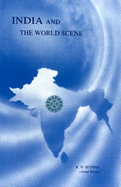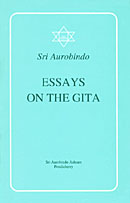“An idiot hour destroys what centuries made…”
“War making nought the sweet smiling calm of life,
Battle and rapine, ruin and massacre
Are still the fierce pastimes of man’s warring tribes;
An idiot hour destroys what centuries made…”– from Savitri, by Sri Aurobindo
Our impressions of war, its causes and consequences and the moral judgment we reserve for either of the warring nations or groups, are guided by many factors. Media coverage, commentary from ‘experts’, public opinion – heck, even social media – all these shape our thoughts.
We recoil from the images and sounds of war, and turn our minds away from the difficulty of the problem – at least until it hits home. And now, even that option escapes us, wherever ‘home’ may be. Every few months, if a few hundred civilians are not casualties of war, we should probably be pleasantly surprised; these are the times we have been chosen to live in [1].
War confuses us, and leaves us dismayed, broken and increasingly cynical.
But we do aspire to see a world without wars.
What could get us there? As a first step, we look at efforts aimed at getting countries to disarm. This endeavor for global disarmament is documented extensively on the web. I will not rehash any of it, though I would not encourage a dreamer or idealist to look in this direction.
So which direction could we look? If we keep our eyes even half-open on South Asia, we would see a Sri Lanka torn to shreds by its decades-long war with the LTTE. India has been roped into four full-blown wars in the past half-century, and is no stranger to armed conflict. China, far from letting Tibet go autonomous, is considering a strategic ‘Partial-war’ with India to resolve what it claims as Southern-Tibet (Arunachal). Last year, we learned of 800 women being trained in PoK, Rawalpindi and Peshawar for attacks on India. More recently, a Taliban group claims it has readied 3,000 holy warriors for its conquest of India. Within India, maoist violence over the last few years has claimed more lives than 9/11 and the Iraq war combined.
Of course we can always return to the perpetual state of war between Israel vs Hamas or Hezbollah – everywhere we look, there seems to be no end in sight to hostilities. There are full-blown wars concurrently in most regions of the forgotten, dark continent – Africa.
War seems to be everywhere, in the fresh past or not too distant future, with all possibilities on the table. As a civilian, I understand precious little of what it could mean to be actively involved ‘on the ground’. But beyond the specifics of the circumstances of any of these wars, I wanted to study the subject of war on as broad a canvas as I could. I needed to find some insightful commentary that was independent of ideology and founded on something concrete. I wanted to flush out all euphemisms and make an effort to observe.
This 5-part series is an effort in that direction.
A quick note on the presentation of topics and content – I have very few original thoughts to share on this difficult topic. For the most part, the canvas draws from the work of giants, whom I’ll cite generously, should you like to pursue these thoughts further.
In fact, where I have written anything, the content is italicized.
Related links
II The elimination and passing of war?
III Heraclitus and Nietzsche on war, and the Upanishadic view
IV Peace, Force and the Psychological basis of war
VI Non-violence, Gandhi’s Ahimsa and Pacifism
[1] There are other kinds of conflict – religious conflict in particular, that are especially painful and hard to come to terms with. This subject deserves a tremendous study, and I will not be diving into these waters at present.
References
 [Book_1] K.D.Sethna (Amal Kiran) – India and the World Scene. The book is a compilation of articles written between 1949-50. 1st Edition 15 August 1997. I find Sethna to be a first-rate mind, and his political and social commentaries from almost a half-century ago find much relevance even today. He has written over forty books on a wide variety of subjects.
[Book_1] K.D.Sethna (Amal Kiran) – India and the World Scene. The book is a compilation of articles written between 1949-50. 1st Edition 15 August 1997. I find Sethna to be a first-rate mind, and his political and social commentaries from almost a half-century ago find much relevance even today. He has written over forty books on a wide variety of subjects.
 [Book_2] Sri Aurobindo, The Human Cycle, The Ideal of Human Unity, War and Self-Determination. In The Human Cycle, Sri Aurobindo traces the evolution of human society and suggests where it is headed. In The Ideal of Human Unity, he examines the possibility of the unification of the human race. In War and Self-Determination, he discusses the sovereignty of nations in the aftermath of the First World War. These works were first serialised in the monthly review Arya between 1916 and 1920; later Sri Aurobindo revised them for publication.
[Book_2] Sri Aurobindo, The Human Cycle, The Ideal of Human Unity, War and Self-Determination. In The Human Cycle, Sri Aurobindo traces the evolution of human society and suggests where it is headed. In The Ideal of Human Unity, he examines the possibility of the unification of the human race. In War and Self-Determination, he discusses the sovereignty of nations in the aftermath of the First World War. These works were first serialised in the monthly review Arya between 1916 and 1920; later Sri Aurobindo revised them for publication.
 [Book 3] Sri Aurobindo, Essays on the Gita. 1st published 1922. These essays were also written for the monthly Arya, between 1916-1918. .
[Book 3] Sri Aurobindo, Essays on the Gita. 1st published 1922. These essays were also written for the monthly Arya, between 1916-1918. .
 [Book_4] K.D.Sethna (Amal Kiran), The Indian spirit and the World’s Future, [A companion volume to Book_1, this one is online here]
[Book_4] K.D.Sethna (Amal Kiran), The Indian spirit and the World’s Future, [A companion volume to Book_1, this one is online here]